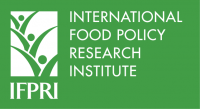
An estimated 202 million hectares of land suitable for farming remain uncultivated in Africa, despite near-constant calls for the region to intensify its agricultural production to keep up with the food demands of a rapidly growing population. So why is so much potentially productive land not being used for agriculture? In many areas, unreliable rainfall and poor soil fertility make the land, while cultivable, difficult to farm. In addition, a lack of infrastructure, such as roads and irrigation, and support services for farmers means that poor farmers often have little incentive to take risks and try to boost their productivity.
Another challenge arises from the fact that conditions vary from region to region within Africa. This means that intensification efforts must be tailored to each specific location; a one-size-fits-all solution will not be effective. Geo-spatial data can be hugely beneficial in determining the exact weather, agricultural, market, and infrastructural conditions prevalent in a certain area. The new Atlas of African Agriculture Research & Development , published by IFPRI in 2014, makes use of just such data to examine seven factors that impact agriculture in Africa: politics and demographics, farming systems and staple crops, growing conditions, vulnerability to shocks such as climate change or crop diseases, water use and availability, access to trade, and welfare indicators like hunger and poverty. The atlas provides maps illustrating each topic, as well as information about the underlying data and analysis of why the topic is important to agricultural productivity.
The section on cropping intensity, authored by Stefan Siebert, Petra Döll, and Felix T. Portmann, finds that the number of harvests per year is highest in irrigated areas, like the Nile River Delta, and in wetland rice-growing areas (for example, southern Nigeria). Crop intensity in other areas of Africa is limited by scant water supplies and by the common practice of allowing land to lie fallow for longer periods of time between harvests in order to replenish the soil nutrients. Knowing which areas could potentially increase their ability to have multiple harvests each year is crucial to overall agricultural intensification. While Africa has large swathes of land not currently under cultivation, as previously mentioned, expanding cropland area is more difficult due to issues of soil fertility, environmental concerns, or high population density. For areas that can sustain increased crop intensity, such as tropical or subtropical regions with greater water supplies, increasing the number of harvests per year could lead to an important increase in crop production, allowing these regions to play a leading role in feeding Africa’s growing population. As the authors point out, however, such intensification will also require careful water and soil nutrient management to make them sustainable and climate-smart.
In a discussion on agroecological zones, author (and atlas editor) Kate Sebastian emphasizes that because of Africa’s dependence on rainfed agriculture, farmers’ productivity is almost entirely determined by the zone in which their land happens to lie. Agroecological zones, or AEZs, are geographical areas with similar climatic conditions that influence each area’s ability to support rainfed agriculture. AEZs are determined by the area’s latitude, elevation, temperature, seasonality, amount of rainfall, and distribution or rainfall during the growing season(s). The agroecological map reveals that zones tend to be similar longitudinally north and south of the equator. Understanding the agroecological conditions in a certain area is essential for policymakers and development professionals to consider when implementing new agricultural policies, such as the expansion of new technologies. In addition, expanding the conversation to similar agroecological zones across the continent, rather than focusing solely on regional or country boundaries, can allow for greater information-sharing and the introduction of new ideas and knowledge.
